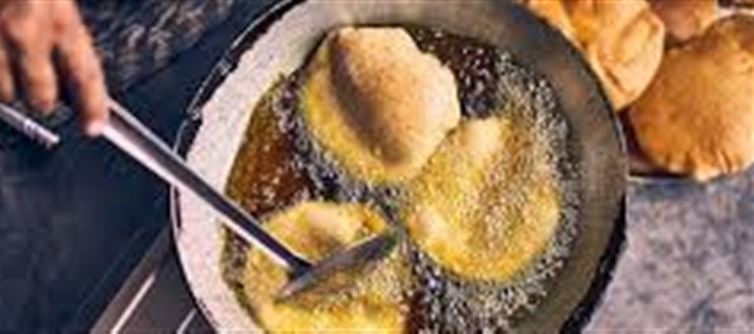
Frying food can be satisfying, but hot oil splatters are messy—and painful. Luckily, there are simple kitchen hacks to keep your cooking safe and clean.
1. Pat Dry Ingredients
Water is the main culprit behind splattering.
Before frying, dry vegetables, meat, or dough with a paper towel. Even small droplets can cause oil to pop.
2. Use a Deep Pan
Shallow pans increase the chance of oil spilling and splattering.
A deep frying pan or kadai allows enough space for oil to bubble safely.
3. Add a Pinch of salt or Flour
Sprinkling salt or flour on wet ingredients lightly can absorb extra moisture, reducing splashes.
4. Control the Temperature
Avoid heating oil too quickly.
Use medium heat rather than high heat, especially for delicate foods like onions or thin batter.
5. Use a Splatter Guard
A mesh or perforated lid placed over the pan allows steam to escape while blocking oil from popping out.
This is especially useful for deep frying and sautéing.
6. Add Ingredients Gradually
Dropping too much food at once causes oil to bubble violently.
Add items in small batches, giving oil time to stabilize between additions.
✅ Bonus Tip:
Keep a kitchen towel or lid handy to quickly cover unexpected splashes, and always wear long sleeves for safety.
These hacks make frying safer, cleaner, and more enjoyable. With a little attention, you can say goodbye to those painful, flying oil drops!
Disclaimer:
The views and opinions expressed in this article are those of the author and do not necessarily reflect the official policy or position of any agency, organization, employer, or company. All information provided is for general informational purposes only. While every effort has been made to ensure accuracy, we make no representations or warranties of any kind, express or implied, about the completeness, reliability, or suitability of the information contained herein. Readers are advised to verify facts and seek professional advice where necessary. Any reliance placed on such information is strictly at the reader’s own risk.




 click and follow Indiaherald WhatsApp channel
click and follow Indiaherald WhatsApp channel